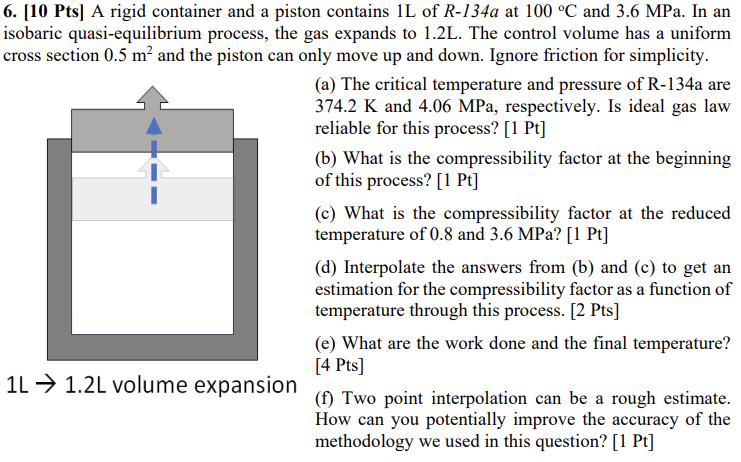(Solved): A rigid container and a piston contains 1L of R-134a at 100 o C and 3.6 MPa. In an isobaric quasi-eq ...
A rigid container and a piston contains 1L of R-134a at 100 o C and 3.6 MPa. In an isobaric quasi-equilibrium process, the gas expands to 1.2L. The control volume has a uniform cross section 0.5 m2 and the piston can only move up and down. Ignore friction for simplicity.
(a) The critical temperature and pressure of R-134a are 374.2 K and 4.06 MPa, respectively. Is ideal gas law reliable for this process? [1 Pt]
b) What is the compressibility factor at the beginning of this process? [1 Pt]
(c) What is the compressibility factor at the reduced temperature of 0.8 and 3.6 MPa? [1 Pt]
(d) Interpolate the answers from (b) and (c) to get an estimation for the compressibility factor as a function of temperature through this process. [2 Pts]
(e) What are the work done and the final temperature? [4 Pts] (f) Two point interpolation can be a rough estimate. How can you potentially improve the accuracy of the methodology we used in this question? [1 Pt]
